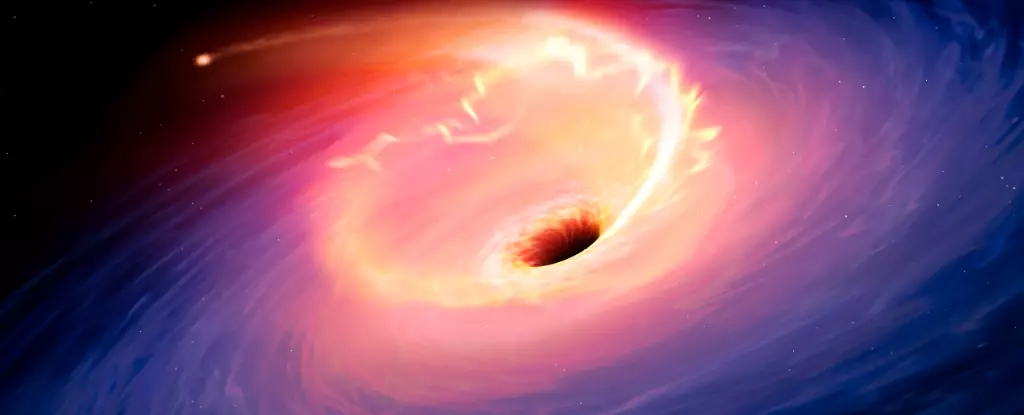Stars collapsing past the event horizon of a black hole is not an uncommon sight in the world of astronomy. The flashes representing the death throes of these stars serve as a grim reminder of the destructive forces at play. However, in rare instances, a star manages to escape being completely swallowed by its gigantic neighbor and is instead pulled into an orbit, leading to a slower and more drawn-out demise.
A New Study Unveiled
A recent study utilizing X-ray data from the Chandra telescope and other instruments has shed light on a supermassive black hole situated at the core of a distant galaxy. This black hole has captured a star in its orbit and is slowly devouring it, offering astronomers a unique opportunity to observe and learn about a variety of intriguing physical processes.
The journey of this star’s capture by the black hole began with the discovery of a “tidal disruption event” (TDE) known as AT2018fyk back in 2018. Initially observed by NASA’s Neutron star Interior Composition Explorer (NICER), follow-up investigations were carried out using Chandra and XMM-Newton, ESA’s X-ray telescope.
A Surprising Turn of Events
Just when astronomers thought the story had reached its conclusion, a second spike in X-ray and UV emissions emerged from the black hole about two years later. This increase in luminosity was attributed to the star being partially consumed again as it orbited the black hole in a highly elliptical trajectory.
Scientists, armed with their calculations, predicted that the TDE would come to an end in August 2023. Observational time on the Chandra telescope confirmed their hypothesis when a significant dimming of emissions from the black hole occurred on August 14th, 2023. The fate of the star remains uncertain – whether it was completely torn apart or managed to survive for another round of orbital dance with its colossal companion.
The Intriguing Binary System
The star at the heart of AT2018fyk was believed to have originally been part of a binary system. However, its partner star was forcibly ejected when the pair encountered the gravitational pull of the black hole. Now hurtling away at high speeds, the partner star may eventually escape its galaxy altogether.
As the system’s physical properties hint at a potential third event between May and August of 2025, astronomers eagerly await the next episode in this cosmic saga. With the system’s ability to challenge existing theories and the growing interest it has sparked, the research team is optimistic about securing additional observational time in the future to witness the continuation of this captivating black hole spectacle.


Leave a Reply